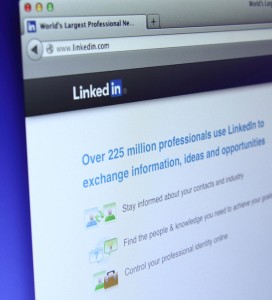About LinkedIn
 LinkedIn is the world’s largest professional social network. It has over 225 million users and is popular around the world. LinkedIn enables you to build your professional identity online, stay in touch with colleagues and connect with new people. It is also a robust communication network that allows you to find news and information as well as publish content to your network.
LinkedIn is the world’s largest professional social network. It has over 225 million users and is popular around the world. LinkedIn enables you to build your professional identity online, stay in touch with colleagues and connect with new people. It is also a robust communication network that allows you to find news and information as well as publish content to your network.
Check out this video for more information on LinkedIn:
LinkedIn Glossary
Connection
The people you invite or who invite you to connect on LinkedIn. When you accept a connection you form a “first level” relationship with them in your LinkedIn network.
Degrees
Connections are shown in relative degrees. A first degree connection is someone you know directly and who is in your network. A second degree connection is “a friend of a friend” connection. A third degree connection is “a friend of a friend of a friend”, or someone you are connected to through two other people.
Inbox
Your inbox allows you to receive, send and reply to personal messages sent to you by other LinkedIn members.
InMail
InMail is a premium feature of LinkedIn (i.e. requires a paid account). It allows you to send a message to anyone on LinkedIn, regardless of whether you’re connected with them.
Introduction
An introduction is a request made to another LinkedIn user to introduce you to someone they know, that you do not have a direct connection with. It’s a way to introduce yourself to someone you do not necessarily know but would like to know. LinkedIn limits the number of introductions you can have pending at any given time.
Invitation
An invitation is sent to a member when you ask them to connect with you. They can accept or decline your invitation to connect.
Groups
A LinkedIn Group is a group of LinkedIn members that come together around a particular interest. Groups are a great way to engage in discussions and expand your network on LinkedIn. A group can be Open, meaning anyone can join, or Closed, meaning users must request to join the group and be approved by a group administrator before they can become a group member.
Network
Your Network is your group of LinkedIn connections.
Profile
This is your profile on LinkedIn. It can include your profile picture, a summary, job history/resume, recommendations and more. This is what other see when they click your profile in LinkedIn.
Recommendation
You can ask another LinkedIn member to recommend you, similar to a reference. They can write a recommendation that you can then post to your profile.
Update
You can share an update on your LinkedIn profile to any link, video, article, or simply a text update. This update appears on your profile and can be shared or commented on by your connections.
Endorsements
People in your network can endorse you for specific skills. You can also endorse other people in your network for their skills. Endorsements show up in your profile under Skills and Expertise.
Company Pages
LinkedIn users can create a company page for their organization. Company Pages can include updates, product and service listings, as well as lists of current and former employees.
University Pages
LinkedIn University Pages allow educational institutions to have a presence on LinkedIn. University Pages have tools specific to education, such as alumni information, and the ability for members to connect with one another through the page. Check out the Algonquin College University Page!